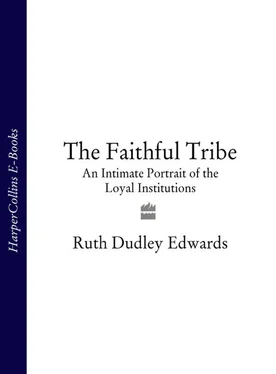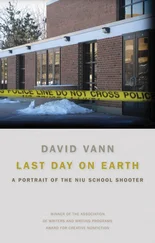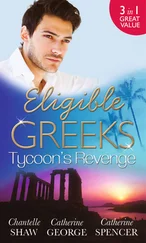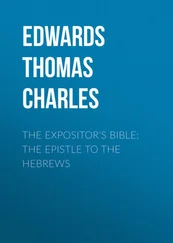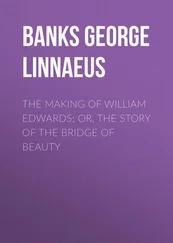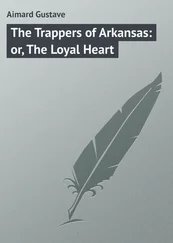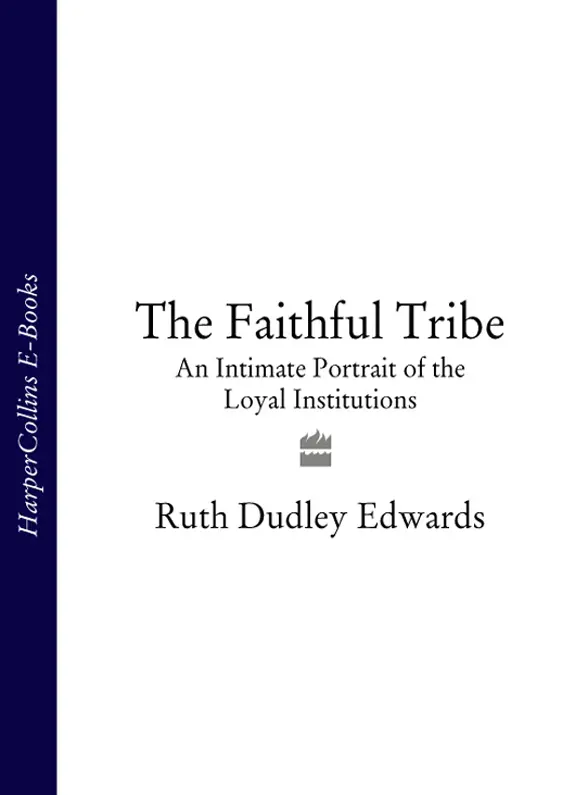
The Faithful Tribe
An Intimate Portrait of the Loyal Institutions
RUTH DUDLEY EDWARDS
To all my friends in the loyal institutions and especially to Henry (who dragged me into this in the first place), Lorraine, Erin and Thomas, my Northern Ireland family, who made researching this book such a joy.
Cover
Title Page
Dedication
List of Illustrations
Introduction
1. Eight Parades, a Cancellation and Some Anthropological Notes from the War-zone
2. What Members of the Irish Loyal Institutions Do
3. Onlookers, Participants and Opponents: the Twelfth
4. The Family Abroad
5. The Wars of Religion Begin
6. ‘Oranje boven!’
7. ‘The Orange Quadrilateral’
8. ‘Conceived and brought forth by humble men’
9. A Century in the Life of a Lodge
10. Villains and Heroes
11. Ourselves Alone
12. The Rise of the Residents’ Groups
13. The Background to Drumcree
14. Drumcree One, 9–11 July 1995
15. The Road to Drumcree Two
16. The Drumcree Disaster, 7–11 July 1996
17. The Road to Drumcree Three: William Bingham’s Story
18. Drumcree Three: The Rest of the Story
19. Drumcree Four, 5 July 1998–?
Afterword
Appendix: Draft Speech for the Prime Minister
Select Bibliography
Index
About the Author
Copyright
About the Publisher
1.Royal Black Preceptory No 800, Clogher, County Tyrone, circa 1930.
2.Tom Reid (as baby) at his first Twelfth, Fivemiletown, County Tyrone, 1934.
3.Banter at ‘The Field’, Ballymoney, County Antrim, August 1989. (JFA Studio)
4.The annual re-enactment of the Battle of the Boyne at Scarva, County Down. (Bobbie Hanvey)
5.Making Lambeg drums in Belfast. (JFA Studio)
6.Three generations of the Brownlees family, Ballymena, County Antrim. (Bobbie Hanvey)
7.‘If Northern Ireland Was Really “British”…’ (Martyn Turner/ Irish Times)
8.Henry, Erin and Thomas Reid outside the Orange Hall in Glenageeragh, County Tyrone, 1995.
9.Gerard Rice of the Lower Ormeau Concerned Community. (MSI)
10.Donncha MacNiallis of the Bogside Residents’ Group. ( Belfast Telegraph)
11.Martin McGuinness and Breandán MacCionnaith walk the Garvaghy Road. (Dan Chung/Reuters)
12.Robert Saulters, Grand Master. (MSI)
13.Press Conference at Craigavon, County Armagh, 27 June 1997. ( Belfast Telegraph)
14.Garvaghy Road, County Armagh, 6 July 1997. (John Giles/?? News)
15.Apprentice Boys Pageant, Londonderry, August 1997. (Mark Stakem)
16.RUC versus loyalists in Derry, aftermath of Apprentice Boys Parade, 1997. (Mark Stakem)
17.Gerry Adams and Martin McGuinness at rally following Belfast anti-internment march, August 1997. (Mark Stakem)
18.Chinook picking up soldiers from field above Drumcree church, 10 July, 1998. (Max Nash/Associated Press)
19.Joel Patton and his supporters occupying the House of Orange in protest against the leadership, December 1997. (MSI)
20.Protest march in Sandy Row, 6 July 1998. (Belfast Telegraph)
21.Funeral of Jason, Mark and Richard Quinn, July 1998. (Pacemaker)
22.Harold Gracey in his caravan at Drumcree, January 1999. (Martin McCullough)
When I go to Northern Ireland, I’m looking back to my youth in the 1950s. I remember in Sheffield on Whit Monday when Protestant Sunday schools used to parade to a service and Boys’ Brigade, sea scouts, boy scouts, cubs, brownies, girl guides – scores of children walking past behind a banner carried by some adult. And we all used to go along and the preachers used to preach and everybody used to walk around talking to people you’d not seen for a year. I remember that from my boyhood and see a resonance of it in Northern Ireland. They are to some extent recreating the old virtues of family, sobriety, self-reliance, hard work and thrift.
It’s the Blue Remembered Hills: you can’t go back. We can all see that community and experience a sense of loss – because we know where we’ve come from. But it makes me feel angry that an entire community should be demonized for no greater crime than being out of fashion.
English Orangeman
AT AN ANGLO-IRISH CONFERENCE in 1996, I was standing in the bar with two Northern Irish Orangemen when a third came up and said: ‘I spent an hour last night explaining to X and Y [two intelligent and sophisticated members of the Dáil, the Irish parliament] why I’m an Orangeman. One of them has just bounced over to me and said: “We’ve been talking about you, and we’ve all decided that you can’t be an Orangeman. You’re too nice.” ‘ To which the second Orangeman replied: ‘I was in Dublin a while ago when someone in the group I was with who knew me quite well said: “Why don’t you tell those awful Orangemen to stop those parades?” When I explained that I was an Orangeman, they all said, “You’re not.” I said, “I am,” and they said, “You’re not.” “But I am.” “You’re not. You’re not. You’re not.” So I said, “OK. Have it your way. Obviously when I think I parade through Belfast in a collarette on the Twelfth of July I’m suffering from delusions.” ‘ And the third Orangeman, who had always believed the southern Irish mind was so closed it was a waste of time trying to explain anything, said, ‘There you are! What did I tell you?’
I spring from a southern Roman Catholic, nationalist tradition myself, but over the decades, I have become aware of my tribe’s effrontery and laziness of mind where Northern Protestants, particularly Orangemen, are concerned. ‘Why doesn’t the British government stop those dreadful bigots from strutting through nationalist areas?’ is the cry from people who’ve never met an ordinary Orangeman. And with the next breath they say that unionists have no culture worth talking about.
During the past few years, as I researched this book, I have met hundreds of members of the loyal institutions: the Apprentice Boys, the Orange Order and the Royal Black Institution. I have never known a community as misrepresented and traduced. In their pride and inflexibility, though, they have certainly given plenty of ammunition to their enemies. But then the qualities that enable people to endure a life under siege are not those that make for intellectual nimble-footedness and a talent for public relations.
Most members of the loyal institutions are ordinary, decent people, many of whom have endured extraordinary fear and suffering without becoming bitter. Many are among the finest people I have ever met and live lives that are an inspiring witness to their faith. And others, of course, are very bigoted and nasty.
Along the way I’ve asked Orangemen here and there what they hoped might emerge from my book. I enjoyed most the suggestion from the English Orangeman Mike Phelan, (who gave me the run of his library and his unpublished work on English Orangeism) that it should prove conclusively that compared to Orangemen the Knights of the Round Table were cornerboys. I’ve failed to do that, I’m afraid, but I hope I may have made some headway in satisfying some of my other advisers, like Henry Reid, who told me my job was to give an idea of the spirit of the ordinary Orangeman. Graham Montgomery elaborated: ‘I’d like it to show that Orangemen are just men and Orangewomen just women – just people. And that they can be terribly cultured people who go to the opera or holiday abroad or can be terribly pedestrian and watch the football and eat chips and watch Coronation Street and go to Newcastle for a short break. That they can be ministers or businessmen or lawyers or teachers or farmers or factory-workers – or, like Dr Barnardo, be philanthropists. That they cover the whole gamut of life in any society. That there’s something about the Orange that everybody, even outsiders, can identify with in some way. And that the Orange Order is something we’re involved in in our leisure time – something important enough for us to actually create leisure time for it.’
Читать дальше
